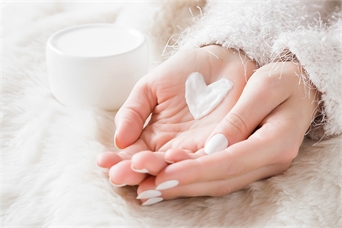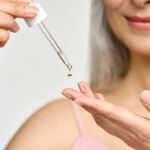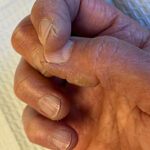
Dry skin is sometimes only a cosmetic issue, but many patients with dry skin complain of irritation and itching. Some develop cracks and fissures that can lead to skin infections. There is a common misconception that dry skin is due to decreased oil production, but it’s actually a result of water loss due to changes in the skin that occur as we age. That’s why there’s a plethora of creams and lotions promoted as “moisturizers”. Most of these products contain oil in water to add moisture and keep it on the skin. The key ingredients to look for in an effective moisturizer include:
- Occlusives: These ingredients prevent water loss by blocking evaporation, eg: petrolatum, lanolin, mineral oil, silicones
- Humectants: Pull water into the top layer of skin (stratum corneum), eg: Hyaluronic Acid (see last month’s blog), glycerin, urea, panthenol
- Emollients: Make the skin feel soft and smooth, eg: dimethicone, cyclomethicone, jojoba oil
The ingredients are listed on the products package label in decreasing order of concentration and those noted above should be near the top. Here are some additional tips for dealing with dry skin:
- Take shorter showers or baths with warm water. Avoid long exposure to hot water that can strip your skin of oils.
- Use soap primarily on areas of the body that require it and minimize it’s use elsewhere. Moisturizing soaps, eg, Dove, Oil of Olay or soap free cleansers, eg, Cetaphil, Ceravé are good choices. Avoid deodorant soaps and products with fragrance.
- Wash with your hands instead of wash cloths, brushes, and sponges or use them lightly to avoid irritation and blot skin dry gently when toweling.
- Apply a moisturizer immediately after shower or bath to lock in moisture.
- Consider using a humidifier in your bedroom during winter time.


